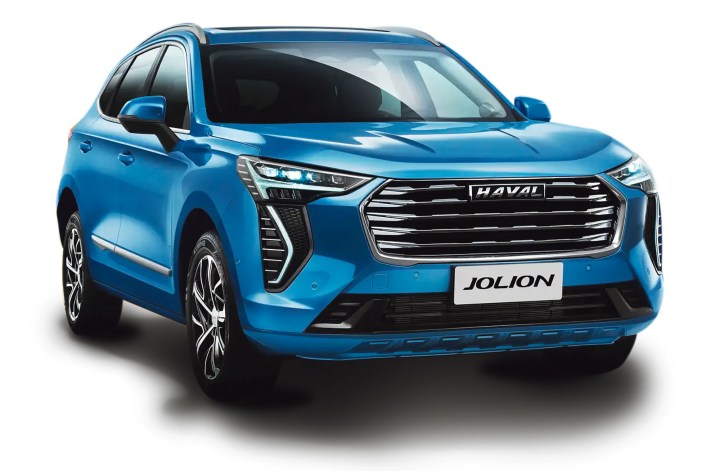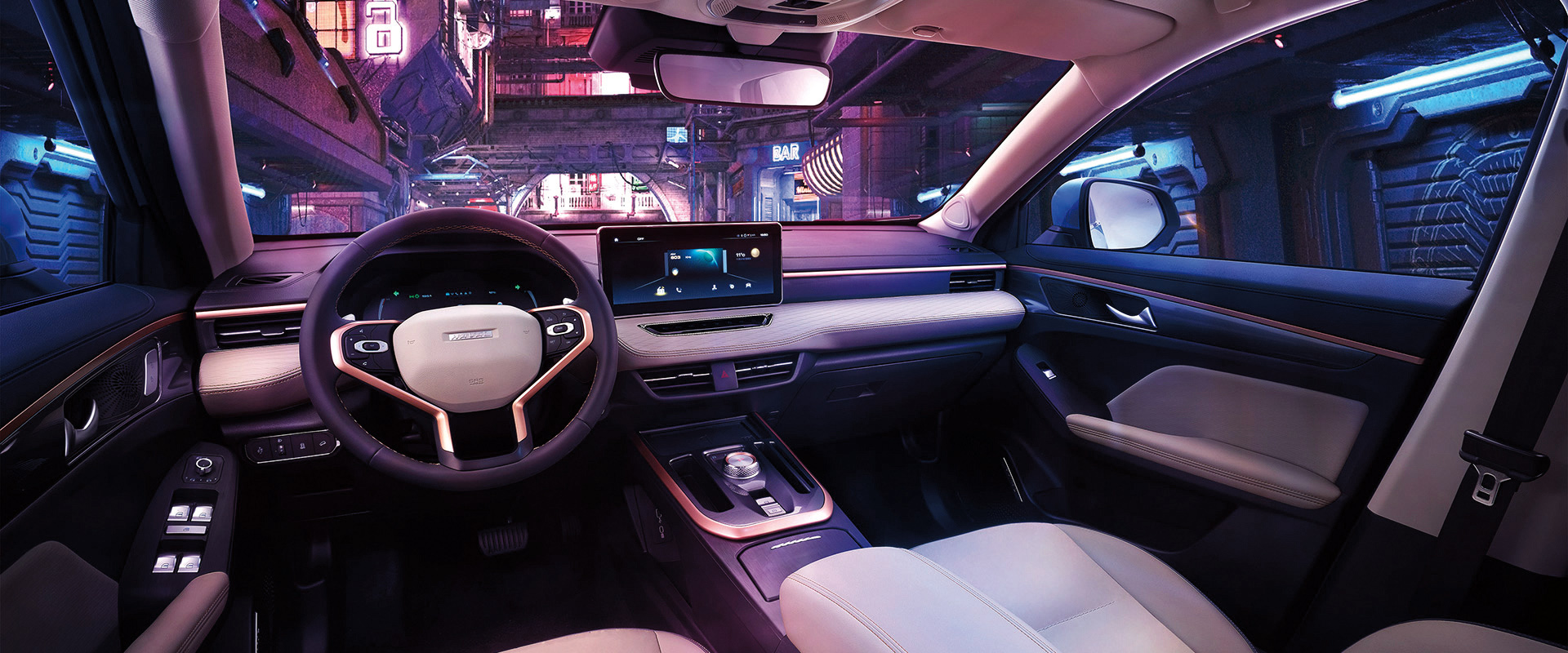A VROOM WITH A VIEW
The motor dragon: China’s shift to electric vehicles will rev up a revolution

Nobody is laughing at China’s astonishing electric vehicle (EV) start-up culture. They’re racing to get ahead of this motor monster.
First published in the Daily Maverick 168 weekly newspaper.
This week Haval, the Chinese manufacturer of crossover SUVs that are skipping along nicely in South Africa, announced its pricing of a new model, the oddly named Jolion.
Like too much out of China, it looks familiar. Observing the interior you might wonder whether you’ve seen something like it before. The reason for that is that you have – in a Range Rover. And you will have the same experience if you look at the rear lights (Honda H-RV) and the daytime running lights (all current-model Volvos). But don’t let this distract you. Like when Samsung decided to start manufacturing rectangular touchscreen smartphones, the imitation just shows that the original idea was a good one.
From the press pictures, the Jolion’s interior looks superb, clean and modern. The rotary control wheel for the onboard computer and the faux-carbon surrounds are all very BMW. Functionality, quality of design and materials are unknown at this point.
It’s also really important to note certain things here, and read between the lines that follow: the crash safety of Havals is unknown. I am not ready to trust China’s internal crash testing, and it’s notable that these cars are not for sale in the EU or the UK, and that EuroNCAP, Europe’s fastidious and independent car smashers, have not tested a Haval or other Great Wall Motors (GWM) products.
But, for fun, I took the highest-spec Jolion – yours for R398,000 – and ran similar specs through BMW’s local configurator. The result was … astonishing. BMW’s comparable car in terms of size and design (a compact crossover SUV, the X1), also comes with a 1.5-litre turbo petrol engine. The Haval is a few kilowatts more powerful and needs an additional cylinder (four) to make that power.
I had to add several equipment packages to my putative X1 to match the specification level of the range-topping Jolion, equipment such as 18-inch wheels, automatic climate control and proper xenon headlights.
The Chinese car really raises the game if you look in detail: lane-keeping assist, pre-collision warning and automatic emergency braking, traffic sign recognition, a panoramic roof and blind-spot recognition. It’s a long list and I’m not going to put it all here, but some of this stuff just isn’t available on the BMW, and what is available costs dearly.

The Haval Jolion. (Photo: Supplied)
Let’s cut to the chase. To come close to matching the R400,000 Haval in terms of specification, you’re going to need more than R770,000 for your front-wheel drive, three-cylinder 1.5-litre BMW X1. That’s just breathtaking, isn’t it?
Now, BMW would argue – truthfully – that this is not an apples-with-apples comparison. They will say that the X1 adheres to the world’s toughest emissions and crash safety regulations. They will point out that the chassis the X1 sits on, the UKL2, is a truly class-leading piece of engineering, good enough for it to underpin the Mini Countryman and the BMW 1 Series, and designed for electric, internal combustion and hybrid power – and they will be right.
The Jolion sits on GWM’s new platform, somewhat unfortunately and in all seriousness called Lemon, which you will be relieved to hear is an acronym, not an adjective. This, too, is said to be designed for electrification, hybridisation and lightweight design.
On the surface, however, this is a deeply unfair comparison to both brands. Lemon vs peerless German engineering. Whatever the subjective feelings one might have on all of this, it seems most unlikely that the Jolion is anything like as good a car as the BMW. I owned a current-generation X1 for a short period and it’s a genuinely top-class family urban SUV.
But is it twice as good? And does it even matter, when the finance sweet spot for middle-class family motoring is between R350,000 and R450,000?
That’s the choice facing middle-class South African motorists, not between an X1 or Audi Q3 or a Mercedes GLA.

The Haval Jolion interior. (Photo: Supplied)
The Jolion, strangely, takes me back to my childhood and to slow trips up the Yorkshire coast in my grandfather’s asthmatic Austin. Grandpa fought a long and brave war across North Africa and, later, across Belgium and the Netherlands.
He had a long enough memory to leave him with scant interest in Japanese products, dismissing them as second-rate facsimiles.
It’s foolish to fall into the same trap with Chinese cars. Haval will make a fortune selling cheap versions of familiar SUVs to South Africans and elsewhere, but it would seem that this is merely a cashflow strategy, because the scale of the innovation and roll-out of EV and hybrid technology, and the associated charging infrastructures by GWM and other Chinese brands is simply astonishing.
If you don’t believe me, in the past week alone (I’m typing this on 21 April), I have seen news and announcements of the following electric cars out of China: Xpeng P5, Roewe Whale, WEY Tank 300, Zeekr (brand), Hongguang Mini EV Cabrio, ORA Lightning Cat, ORA Punk Cat, Zhongtong, BYD AE-1, Great Wall Motor Baja Snake, Chery, Hongqi L-Concept, Haval X-Dog, Leap C01, Hengchi 2, NIO (brand), Hycan (brand), Aion (brand), Exeed (brand), Arcfox.
Honestly, now, how many of these brands have you heard of? Even as somebody with a particular interest in the motor industry and the development of EVs in particular, it’s very, very hard to keep up.

The Haval Jolion rear. (Photo: Supplied)
And, sure, some of the nomenclature is clunky or even amusing to English-speaking ears, but let me assure you that absolutely nobody in the legacy motor industry is laughing at China’s astonishing EV start-up culture. Aside from China’s hulking dominance in the EV supply chain for battery cells, one or a few of these homegrown brands is going to go big, and everybody else is sprinting to get ahead of a Chinese motor dragon that has yet to fully form.
Haval’s SUVs and bakkies are flying out of showrooms in this country. Last week I noted that sales growth for Haval SUVs was more than 240% in two years. This means the Chinese electric revolution is well funded and coming in hot.
If nothing else, it promises to be interesting. DM168
This story first appeared in our weekly Daily Maverick 168 newspaper which is available for free to Pick n Pay Smart Shoppers at these Pick n Pay stores.


















 Become an Insider
Become an Insider
Comments - Please login in order to comment.